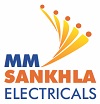Bimetal Overload Relays 3UA and 3UC
Product Details
The 3UA / 3UC thermal overload relays are suitable for customers from all industries, who want guaranteed optimum inverse time delayed protection of their electrical loads. The relays meet the
requirements of IS/IEC 60947-4-1.
Application
3UA overload relay: 3UA5/6 are 3 pole adjustable bi-metal overload relays mainly suitable for normal starting applications. They provide accurate and reliable protection to motors against
overload as per CLASS 10A. They also offer protection against single phasing and unbalanced voltages.
3UC overload relay: 3UC5/6 are 3 pole adjustable, saturable CT operated bi-metal overload relays mainly suitable for heavy starting applications (i.e. when heavy masses are to be put in
motion resulting in larger starting period). They provide accurate and reliable protection to motors against overload as per CLASS 30. They also offer protection against single phasing and
unbalanced voltages.
If single-phase AC or DC loads are to be protected by the 3UA / 3UC thermal overload relays, all three bimetal strips must be heated. For this purpose, all main current paths of the relay must
be connected in series.
Relay overview
Overload relay operates on the bi-metallic principle. The heater winding wound on the bimetal strips carry the current flowing through the motor. In case of overload, the current carried
through the heater winding is more than the rated current. This heats up the bimetals. Due to this bi-metal strips bend and open the NC contact of the relay, which is connected in the control
circuit of the contactor, thus disconnects the motor from the supply. The tripping time is inversely proportional to the current flowing through the bi-metal strips. Bi-relays are therefore,
referred to as “current dependent” and inverse-time delayed relays
1. Connection for mounting onto contactors: Optimally adapted in electrical, mechanical and design terms to the contactors, these connecting pins can be used for direct mounting of the overload relays. Stand-alone installation is possible as an alternative (in some cases in conjunction with a stand-alone installation module).
2. Selector switch for manual/automatic RESET (blue): With this switch you can choose between manual and automatic RESET. A device set to manual RESET can be reset locally by pressing the RESET button. A remote RESET is possible using the RESET modules (accessories), which are independent of size.
3. TEST button (red): Trip circuit can be manually checked by using this button. During this simulation the NC contact (95-96) is opened and the NO contact (97-98) is closed. This tests whether the auxiliary circuit has been correctly connected to the overload relay. The relay must be reset with the RESET button if it has been set to manual RESET. If the thermal overload relay has been set to automatic RESET, then the overload relay is automatically reset when the TEST button is released.
4. Motor current setting dial: Setting the device to the rated motor current is easy with the large rotary knob. (Recessed dial, hence no possibility of accidently change in current setting.)
5. Trip indicator (Green): A separate mechanical Green Trip Indicator is provided on the front cover of the relay to indicate the tripped state of the ‘manual reset’ relay.

